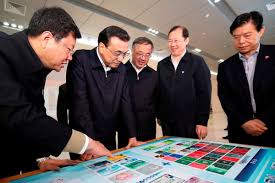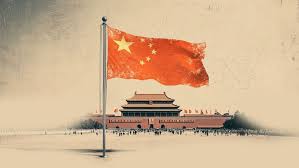China’s economy enters new rank, buoys optimism on global growth

Beijing: The Chinese economy thrived amid downward pressure with major economic targets well met in 2019, showing more upbeat signs, data from the
National Bureau of Statistics (NBS) showed Friday.
The world’s second-largest economy’s gross domestic product (GDP) grew to 99.09 trillion yuan (14.38 trillion U.S. dollars) last year, within the government’s
annual target of 6 to 6.5 percent, NBS data showed.
China’s economy in 2019 was generally stable with quality steadily improving, fulfilling major annual targets and boding stable growth for 2020, Ning Jizhe,
head of the NBS, told a press conference, China Economic Net reported.
The 6.1-percent growth rate, although lower than the 6.6-percent growth in 2018, still leads global economic growth. China’s growth rate is the fastest among
world economies with GDP over 1 trillion U.S. dollars, said Ning.
Ning pointed to positive signals of year-end growth expansion and better-than-expected 6-percent growth in the fourth quarter.
“China remains the ‘locomotive’ of world economic growth and is expected to contribute around 30 percent of global growth,” said Ning, while
acknowledging China’s unchanged status as the largest developing nation.
All major economic indicators including employment, consumer inflation, per capita disposable income and foreign trade fell within the targeted range last
year, he said.
Friday’s data also reflected the country’s efforts in deleveraging and cutting overcapacity. The industrial capacity utilization rate rose to 76.6 percent last year,
while the debt-to-asset ratio of industrial companies edged down 0.3 percentage points over a year ago by the end of November.
China’s economy is undergoing a much-needed structural transformation, as companies trade short-term pressure in profitability for long-term sustainable
growth, said Patricia Xia, a tax leader with the consulting firm Ernst & Young.
The Chinese economy boasts higher economic quality and greater well-being of the people as the per capita GDP topped 10,000 dollars. Per capita disposable
income climbed 5.8 percent year on year in real terms to 30,733 yuan in 2019 with a narrowing urban-rural income gap, Friday’s data showed.
“There has never been an economy with a 1.4 billion population that achieved the level of middle income,” said Zhu Chaoping, a global market strategist with
J.P. Morgan Asset Management.
On the demand side, when more people enter the middle-income group, their demand for a better life and high-quality consumer goods will keep growing,
promising good opportunities for both domestic and foreign businesses, Zhu said.
“On the supply side, a higher income also suggests better education, which could generate more ideas and innovation, so the pace of economic restructuring
and upgrading might accelerate,” Zhu said.
China’s per capita GDP exceeding 10,000 dollars not only means the income of China’s people and enterprises have increased, but it also marks a significant
progress in history, said Xia.
“Based on data released by the World Bank in 2018, there were around 1.5 billion people with a per capita GDP above 10,000 dollars,” Xia said. “As the per
capita GDP of China, a nation with 1.4 billion people, exceeds 10,000 dollars, a total of 3 billion people will enter the ranks, which will play a positive role for
the whole world.”
2020 is the final year for China to secure a decisive victory in building a moderately prosperous society in all respects.
“This year will feature stable growth, driven by the resilient power of Chinese consumption and the development of emerging industries such as the high-tech
sector, which will play a vital role in driving the country’s economic growth,” Xia said.
The signing of the phase-one deal between China and the United States is also expected to add certainty to China’s growth in 2020.
Gao Lingyun, a researcher with the Chinese Academy of Social Sciences, said: “The signing of the phase-one economic and trade deal came at the right time,
and it will help provide a more stable external environment for China to accomplish its great cause of national rejuvenation.”
China has pledged to make ensuring economic stability a top priority this year, while continue to implement a proactive fiscal policy and prudent monetary
policy.
Noting that China is reducing reliance from debts for growth and instead cultivating inherent dynamism, Chinese Vice Premier Liu He said Wednesday the
economy will perform better in the future through deepening supply-side structural reform and industry transformation and upgrading.
“We are optimistic about the economic outlook this year, and we have more confidence in our economy for the long run,” he added. ¦





